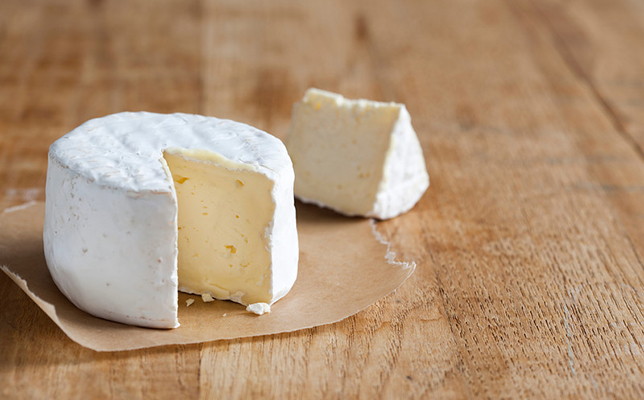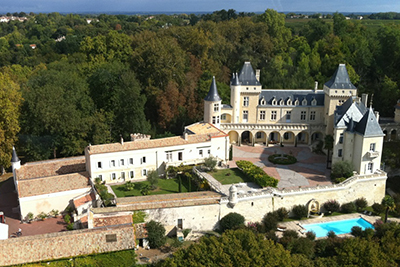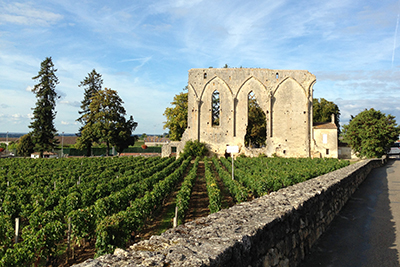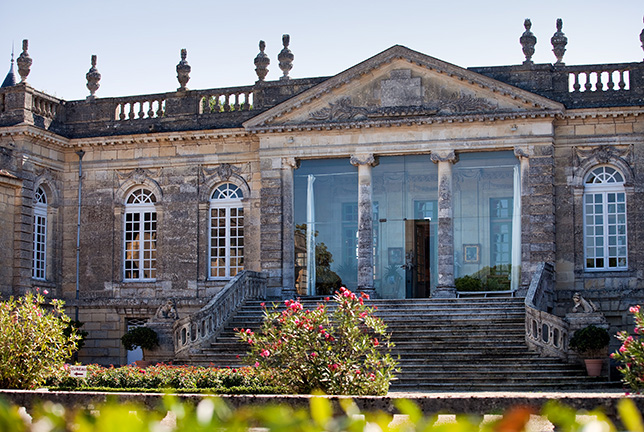
Bordeaux may be one of the most famous wine regions in the world—and the largest wine-growing region in France with upward of 284,000 acres of vineyards—but there are a few appellations that are often overlooked. The Right Bank of the Dordogne River is usually seen as the little sister to the Left Bank (thanks to super famous wineries such as Château Lafite Rothschild, Château Latour and Château Mouton Rothschild), though that’s definitely starting to change. Our Forbes Travel Guide editors were recently in Saint-Émilion, Pomerol and Fronsac, and really savored the aroma of the region’s red wine.
Comprised of 10 appellations, the area on the northern side of the Dordogne is the place to go if you want to really dig into the French concept of “terroir.” Sure, Saint-Émilion and Pomerol are well known—you have Pétrus in Pomerol and Château Cheval Blanc (and its ultra-modern, $18.5 million cellar), which abuts Pomerol, and Château Angélus, which sits less than 3,000 feet from the medieval city, in Saint-Émilion—but the other seven appellations (there are two in Saint-Émilion alone) don’t usually get the praise they deserve.
 Throughout the Saint-Émilion-Pomerol-Fronsac area, you can relish endless blends of merlot, cabernet franc and cabernet sauvignon. The majority of the vines on the Right Bank are merlot, but it’s that terroir that really makes the difference in taste. In Saint-Émilion and Fronsac, you’ll find clay and limestone soil, while Pomerol features gravel or sandy soil. Oddly enough, though Fronsac and Saint-Émilion share a somewhat similar terroir, the wines of Fronsac used to have a rather poor reputation. People thought the winemakers of riverside Fronsac and Canon-Fronsac (a neighboring appellation that’s actually surrounded by Fronsac like a horseshoe) were producing wines that were too sharp and too tannic. That scrutiny actually worked out for those two appellations and the new generation of winemakers learned to produce wines that are now very generous in body and aroma. We suggest trying Château de La Dauphine and the appellation’s largest winery, Château de la Rivière in Fronsac (be sure to check out the 12 miles of underground cellars that were once used as hideouts during World War II), and Château Gaby in Canon-Fronsac to see how far the appellations have come in the past 20 years.
Throughout the Saint-Émilion-Pomerol-Fronsac area, you can relish endless blends of merlot, cabernet franc and cabernet sauvignon. The majority of the vines on the Right Bank are merlot, but it’s that terroir that really makes the difference in taste. In Saint-Émilion and Fronsac, you’ll find clay and limestone soil, while Pomerol features gravel or sandy soil. Oddly enough, though Fronsac and Saint-Émilion share a somewhat similar terroir, the wines of Fronsac used to have a rather poor reputation. People thought the winemakers of riverside Fronsac and Canon-Fronsac (a neighboring appellation that’s actually surrounded by Fronsac like a horseshoe) were producing wines that were too sharp and too tannic. That scrutiny actually worked out for those two appellations and the new generation of winemakers learned to produce wines that are now very generous in body and aroma. We suggest trying Château de La Dauphine and the appellation’s largest winery, Château de la Rivière in Fronsac (be sure to check out the 12 miles of underground cellars that were once used as hideouts during World War II), and Château Gaby in Canon-Fronsac to see how far the appellations have come in the past 20 years.
The great thing about the Right Bank is that these wines, which only make up about 10 percent of red Bordeaux wines, are made to drink at a young age—as opposed to the vineyards across the river that are producing blends that are meant to stay in the cellar for years. We even did a barrel tasting at Château Tertre Rotebœuf of winemaker François Mitjavile’s 2012 Saint-Émilion Grand Cru, and it was more than drinkable. Mitjavile’s wines are as robust as his personality; perhaps it has to do with the vines that sit on that perfectly sloped parcel of land.
The young drinkability has to do more with the fact that the majority of those meticulously kept vines are merlot (80 percent in Pomerol and Fronsac, 65 to 80 percent in Saint-Émilion), but the addition of cabernet sauvignon, which accounts for 10 percent of planted vines at the very most, allows for wines to age well, too—not to mention give a certain spiciness to the overall flavor. Some winemakers do without cabernet sauvignon altogether and just stick with the merlot-cabernet-franc blend, which adds those lovely tannins to the mix; and some (Pétrus) are known for producing wines that are 100 percent merlot.
 But just because these are similar blends throughout the 10 appellations, that doesn’t mean the wines taste the same. Sure, there are definite likenesses; but, for instance, when you do a side-by-side comparison of Saint-Émilion’s four satellite appellations that are across the River Isle, the smallest one of them all stands out. The terroir of Montagne Saint-Émilion, Puisseguin Saint-Émilion, Lussac Saint-Émilion and Saint-Georges Saint-Émilion is very homogenous, so the wines taste nearly the same—and all of these areas boast stunning panoramas of Saint-Émilion with its beautiful monolithic church that looks as if it juts out of a vineyard from this point of view. But because it’s south facing, Saint-Georges Saint-Émilion has a certain je ne sais quoi to it. The wines from estates such as Château Saint-Georges, whose gorgeous 18th-century château sits atop a hill and overlooks seemingly endless waves of vines, and Château Saint André Corbin (the appellation’s second largest winery and sits just down the hill from Château Saint-Georges) are stronger and more concentrated, due to the even, well-drained slopes that are ideally positioned to soak up maximum sun all the way up to harvest time in late September or early October.
But just because these are similar blends throughout the 10 appellations, that doesn’t mean the wines taste the same. Sure, there are definite likenesses; but, for instance, when you do a side-by-side comparison of Saint-Émilion’s four satellite appellations that are across the River Isle, the smallest one of them all stands out. The terroir of Montagne Saint-Émilion, Puisseguin Saint-Émilion, Lussac Saint-Émilion and Saint-Georges Saint-Émilion is very homogenous, so the wines taste nearly the same—and all of these areas boast stunning panoramas of Saint-Émilion with its beautiful monolithic church that looks as if it juts out of a vineyard from this point of view. But because it’s south facing, Saint-Georges Saint-Émilion has a certain je ne sais quoi to it. The wines from estates such as Château Saint-Georges, whose gorgeous 18th-century château sits atop a hill and overlooks seemingly endless waves of vines, and Château Saint André Corbin (the appellation’s second largest winery and sits just down the hill from Château Saint-Georges) are stronger and more concentrated, due to the even, well-drained slopes that are ideally positioned to soak up maximum sun all the way up to harvest time in late September or early October.
Even if you try a Pomerol such as Pétrus and a wine from Lalande de Pomerol such as La Fleur de Boüard, you’ll be able to tell the difference. The terroir in Pomerol is very homogenous with gravelly topsoil and subsoil that’s rich in iron oxides, producing wines that are powerful and deep in color and flavor. As for the neighboring appellation that sits just across the small River Isle, there’s less merlot, so you’ll see cabernet sauvignon popping into the equation.
The best way to get to know each of the 10 appellations is, of course, by tasting various wines. But that can be tough—especially if you’re in the area for less than a week. Many of the châteaux are open to the public for tours and tastings. It’s fantastic to see these massive castle-esque buildings surrounded by row after row of vines, then learning about the winemaking process—from harvesting by hand (like at Château Gaby) to innovative reverse tronconiquetanks suspended from the ceiling (La Fleur de Boüard)—and, of course, it doesn’t hurt that you get to enjoy wine at the end. We highly suggest beginning with an introduction to wine tasting course at Maison du Vin de Saint-Émilion, a wine school in the medieval city. You’ll learn about the terroir and taste wines from each appellation. When we were there, we were able to sample the same vintage (2010, which was a particularly good year for Bordeaux) from the different appellations. It’s really a great way to start your trip.
Photos Courtesy of Chateau Saint-Georges, Chateau de La Riviere and Hayley Bosch

